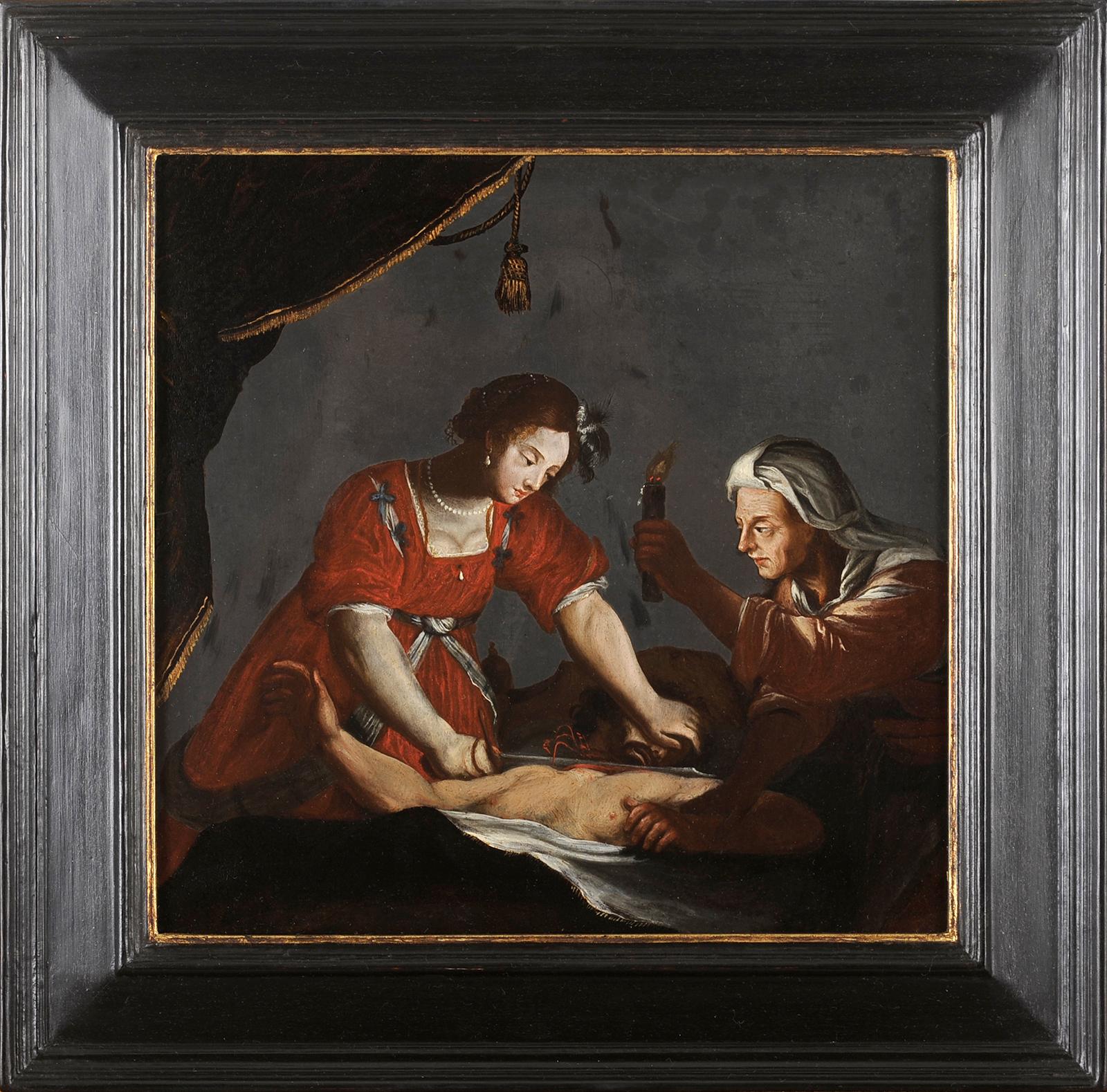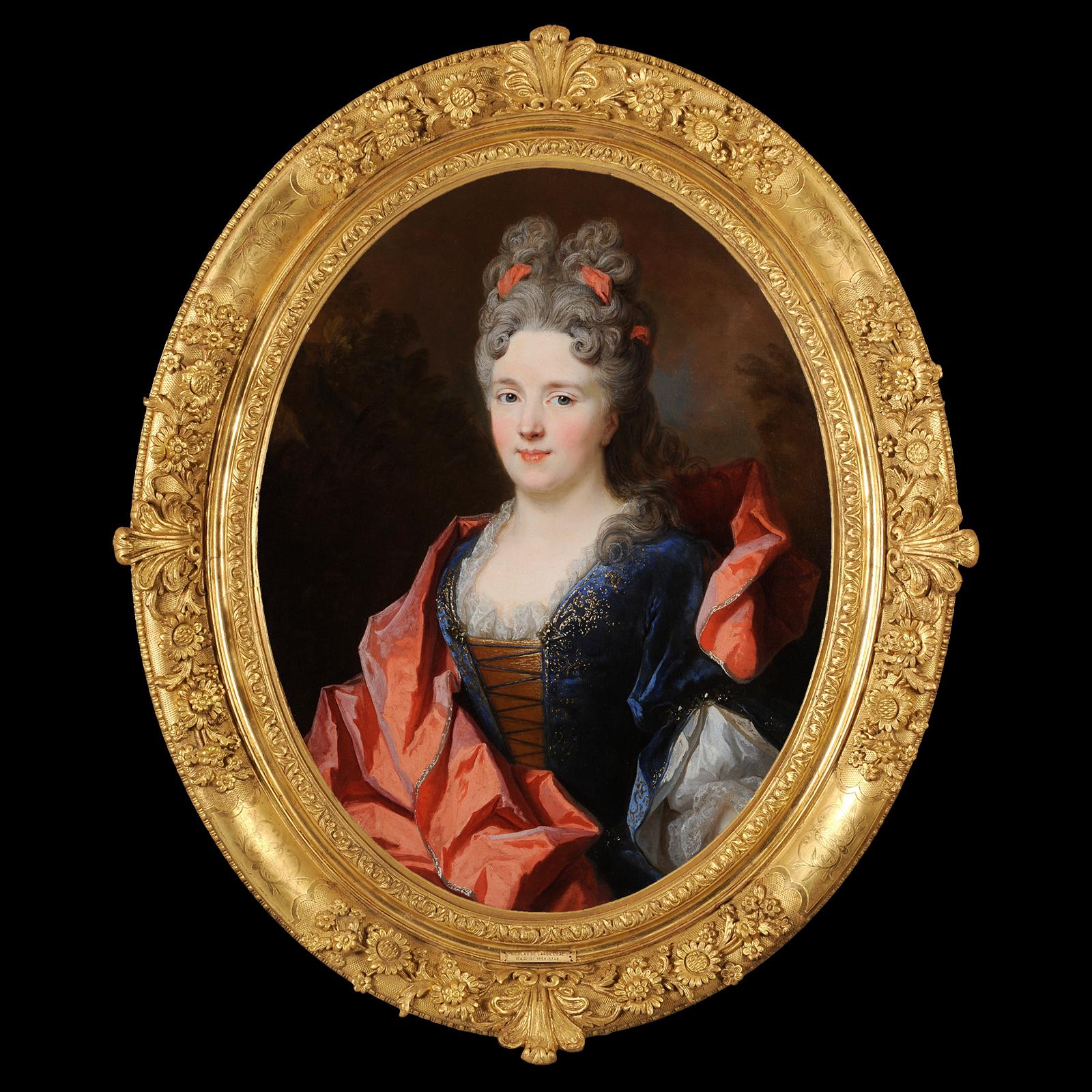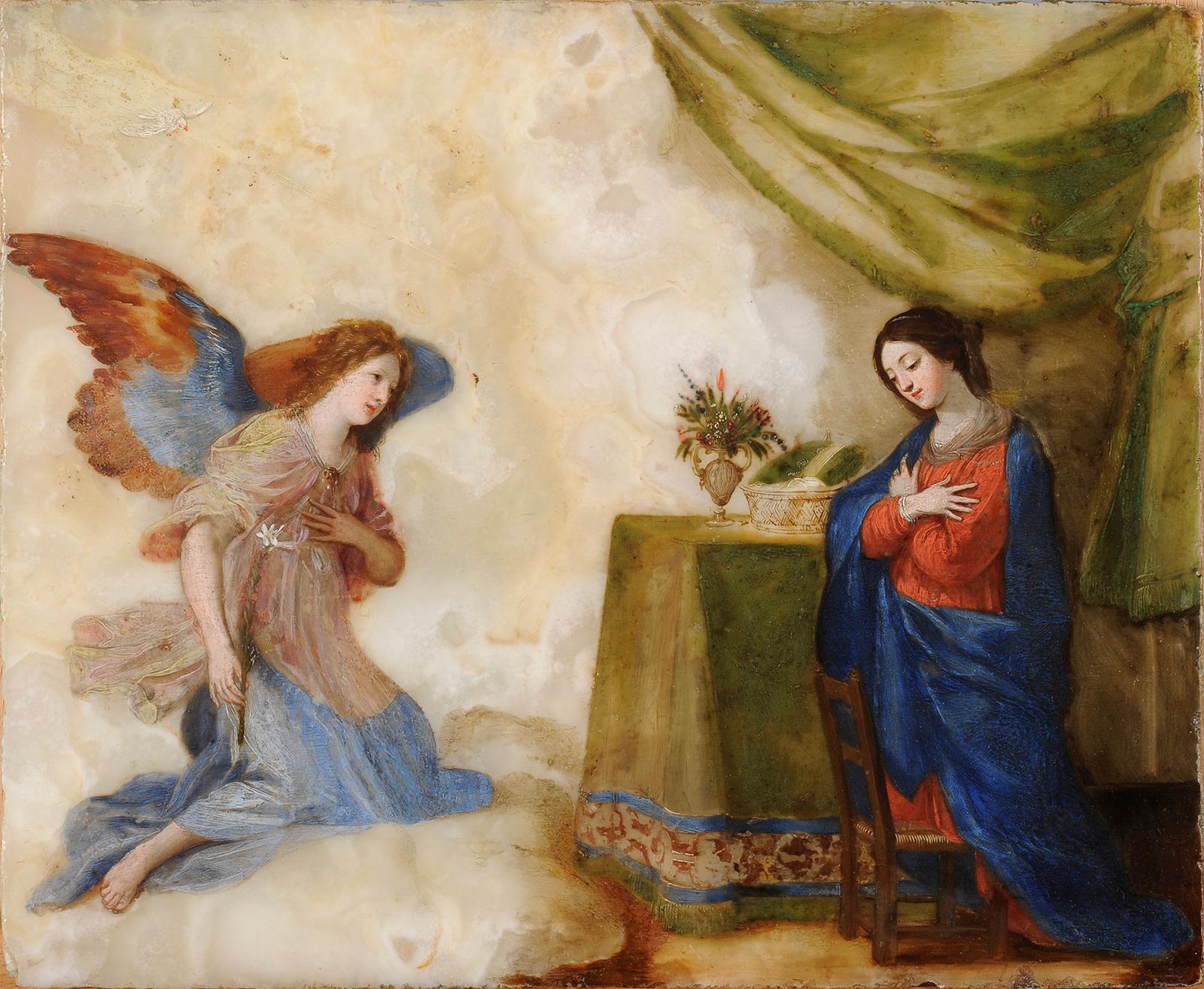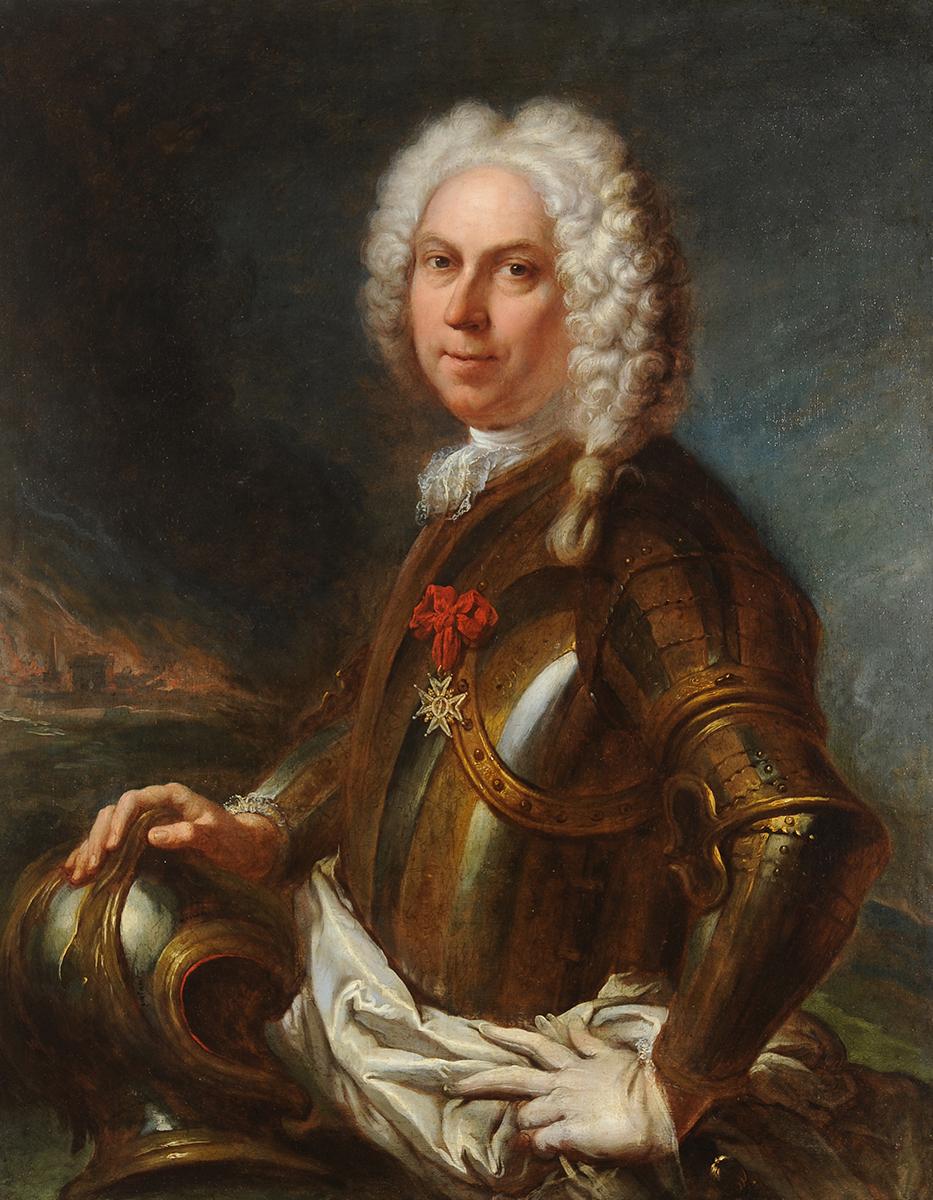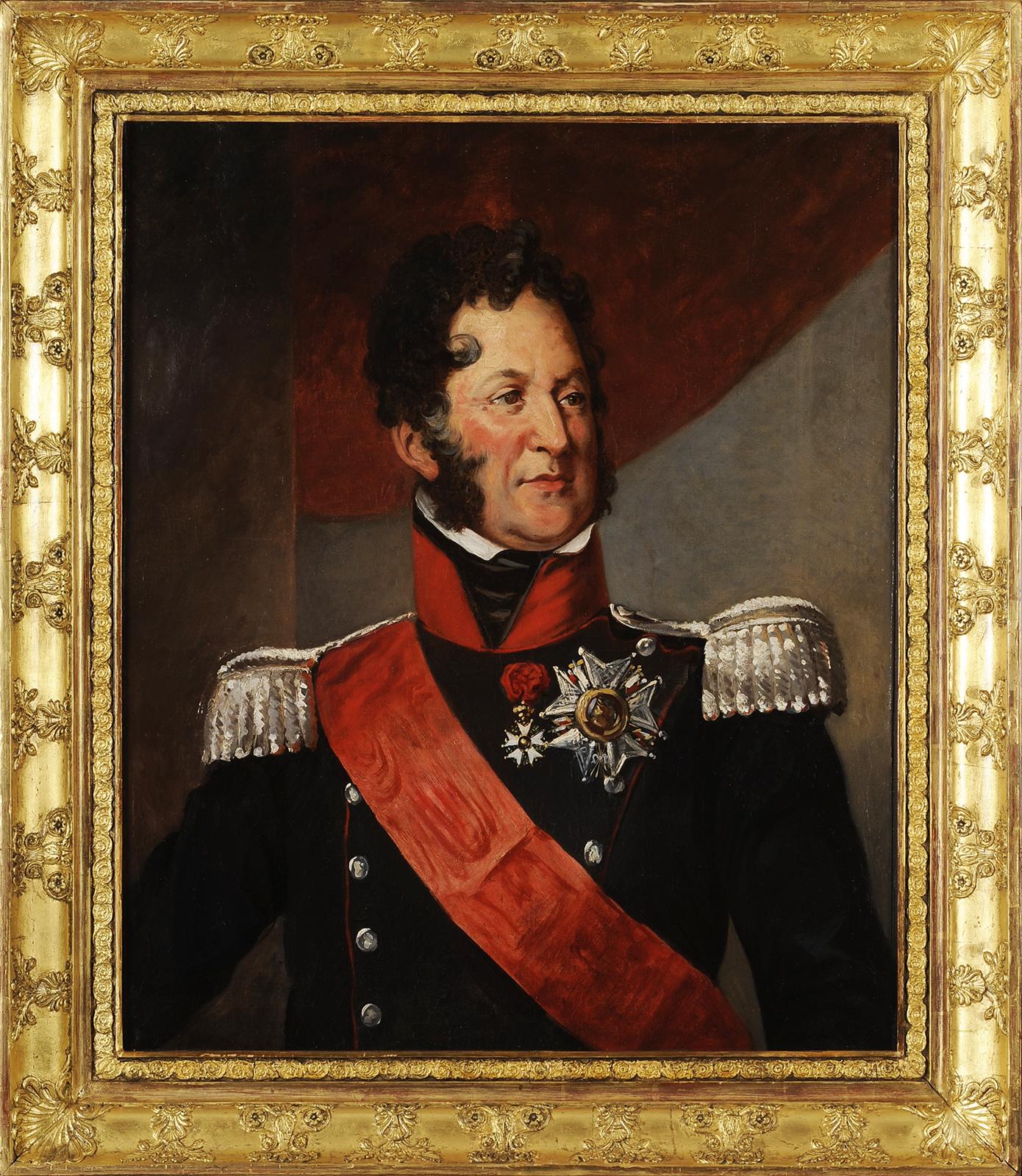Items Similar to Albert MANTELET (1858-1958) French School c1900 Oil Painting
Want more images or videos?
Request additional images or videos from the seller
Albert ManteletAlbert MANTELET (1858-1958) French School c1900 Oil Painting1900
1900
About the Item
Albert MANTELET (1858-1958)
A charming portrait of a young woman resplendent in her finest Sunday bonnet.
Albert Goguet Mantelet was considered to be one of the most accomplished pupils of Ernest Hébert and Heinrich Lehmann.
He painted fashionably attired women from French society. His style achieved
critical acclaim and he quickly became an established artist. Throughout his long career he specialised in genre painting.
His work can be found in the collections of Musees de Chateau Thierry and at Pontoise.
Condition
Heavy craquelure but, stable to the paint surface where it is thickest. Some overpainting to the sky top right.
- Creator:Albert Mantelet (1858 - 1958, French)
- Creation Year:1900
- Dimensions:Height: 15.3 in (38.87 cm)Width: 12.6 in (32.01 cm)
- Medium:
- Movement & Style:
- Period:
- Condition:
- Gallery Location:Holywell, GB
- Reference Number:
Albert Mantelet
Albert Goguet Mantelet was a French artist who worked in oil, pastel and watercolour. He was considered one of the most accomplished pupils of Ernest Hébert and Heinrich Lehmann, both of whom exerted a strong influence on Mantelet's more classical early style. Mantelet developed a reputation as a painter of elegantly dressed women depicted in scenes from fashionable life. These show his mastery of the combination of neoclassical and impressionist styles which owe much to influential artists of his time such as Jacques Joseph Tissot and Claude Monet. He also painted classical landscapes, portraits and still lifes. As Mantelet's style evolved, he received critical acclaim and quickly became a success as an artist. Mantelet's paintings greatly appealed to wealthy European industrialists in the second half of the 19th century and the beginning of the 20th century. This resulted in a number of lucrative commissions for portraits and other subjects. He became known as an artist who specialized in depicting fashionable members of high society dressed in haute couture, giving his clients insightful observations on the lives of fashionable members of the upper class, among whom Mantelet moved comfortably. His paintings of beautiful young women, decked out in their finery, amid sun-drenched riverbanks, bright lawns and formal gardens, were the playground of the privileged in London and Paris.
About the Seller
5.0
Gold Seller
These expertly vetted sellers are highly rated and consistently exceed customer expectations.
Established in 1989
1stDibs seller since 2023
20 sales on 1stDibs
Typical response time: <1 hour
- ShippingRetrieving quote...Ships From: Holywell, United Kingdom
- Return PolicyA return for this item may be initiated within 14 days of delivery.
More From This SellerView All
- Charles Joseph VAN LANDUYT (1854-1934) Malvina 1882Located in Holywell, GBA sensitive portrait of Malvina signed, dated 1882 and presented in its original magnificent heavy gilt frame. Van Landuyt was a Belgian School painter who studied at the Royal Aca...Category
1880s French School Portrait Paintings
MaterialsOil
- Attributed to Isidore-Alexandre-Augustin PILS (1815–1875)By Isidore Alexandre Augustin PilsLocated in Holywell, GBIsidore-Alexandre-Augustin PILS (1815–1875) A bewitching portrait of a young redheaded woman attributed to Isidore Pils. The same sitter appears in another of his other paintings,...Category
1890s French School Portrait Paintings
MaterialsOil
- Daniel De CONING (1660-1727) Portrait of a Cotswold GentlemanLocated in Holywell, GBA magnificent portrait of Henry Izod aged 67 in 1726, unsigned, but attributed verso to De Coning. Presented in a delightful frame probably the original. Th...Category
1720s Old Masters Portrait Paintings
MaterialsOil
- Antonin MERCIE (1845-1916) French Belle Époque PortraitBy Marius Jean Antonin MerciéLocated in Holywell, GBAntonin MERCIE (1845-1916) French Belle Époque Portrait A stylish portrait of a fashionable young woman dating to the Belle Époque period. Signe...Category
1890s Impressionist Portrait Paintings
MaterialsOil
- Margravine of Bayreuth 1725 Old Master Portrait Oil PaintingLocated in Holywell, GBCircle of Antoine Pesnes 1725 Margravine of Bayreuth Old Master Portrait A delightful portrait of a young noble woman ascribed on a label verso as la margravine de Bayreuth, 1725. P...Category
1720s Old Masters Portrait Paintings
MaterialsOil
- Charles J Walker (1828-1924) Pre Raphaelite Inspired Oil PaintingLocated in Holywell, GB“The Locket” An enchanting Pre-Raphaelite inspired painting of a young woman examining a locket. Painted on canvasboard, signed, dated 1912 and presented in a magnificent carved Flo...Category
1910s Pre-Raphaelite Portrait Paintings
MaterialsOil
You May Also Like
- Model undressingLocated in BELEYMAS, FRJulius EXNER (Copenhagen, 1825 - Copenhagen, 1910) Model stripping Oil on canvas H. 122 cm; L. 74 cm Signed and dated 1842 lower right Exhibition: most likely Charlottenborg Salon of 1845, under number 110, titled Modelfigur, awarded with a silver medal Provenance: Emilio Fernando Bolt (c.1860 - 1944), acquired from the artist around 1900, then by descent Our painting was produced as part of the summer sessions organized between 1839 and 1850 by Christoffer Wilhelm Eckersberg (1783-1853), the master of Danish painting of the first half of the 19th century, in his private studio-apartment on the ground floor. floor at the Royal Academy of Fine Arts in Copenhagen. The master brought together a few students there between June and September, rented one or two models for the season, which were painted from different angles, the artists (including Eckersberg himself) sitting side by side. Eckersberg used to paint a fairly small version, the pupils of the larger formats. The work fits more generally into the legendary context of the research and reforms carried out by Eckersberg concerning the studies of nudes and in particular of female nudes, to make this exercise a genre of painting in its own right. Following his two-year stint in Jacques-Louis David's studio in Paris in 1811, Eckersberg had been made aware of work on the nude and in particular on live models, in natural light, while in Denmark the drawings were then only made from casts of antique models or other mannequins. In 1822, when he had been a professor there since 1818, it was he who had the Royal Academy of Copenhagen authorize the study of nudes, no longer in the evening by candlelight, but in natural light; from 1833, it was still he who allowed students to work on nude female models, even if the official authorization of the Academy did not take place until 1839. It was this same year that he instituted his summer sessions, on a private basis, to orient his painting and that of his students towards a new conception of the representation of models: even if the nude remains the real theme, it does not however, this is more than just an academic exercise. The subject is placed in a contemporary interior, with a rather sophisticated decor, and occupied with an intimate activity (it is this type of intimate vein that we will find later in Degas or Cassatt for example); thus in our painting, the young woman is supposed to take off her clothes to wash. The objective is that the viewer forgets that the master and his students are painting a model during a posing session, and that he instead has the impression of being alone with the model, but invisible, almost like a voyeur in spite of himself. Moreover, in these paintings, the model never looks towards the spectator, inducing a psychological distance with him, whereas model and artist are actually physically very close. On the other hand, it is not a question of idealized nudes either, even if Eckersberg, proof of his debt to the antique, chooses fairly classic models and poses. The sensuality is real and very present, with dreamy, even innocent, and timeless expressions (the models do not seem to have a defined age), suave and slow attitudes and movements, and especially with clothes that hide or reveal skillfully parts of the female body: upper buttocks, pronounced hips... Made by an artist under 20, our sensual painting is probably one of the most beautiful and spectacular produced by the students of Eckersberg during these summer sessions. With a perfect balance between the firmness of an ancient statue (it recalls the Venus de Milo) and the softness of the feminine forms, highlighted by a harmonious palette, it captures the attention with many details: the almost photographic folds white clothing...Category
1840s French School Nude Paintings
MaterialsCanvas, Oil
- Judith and HoloferneLocated in BELEYMAS, FRJacques STELLA (Lyon, 1596 – Paris, 1657) Judith and Holofernes Oil on slate H. 23.5 cm; L. 24 cm Son of François Stellaert, a painter of Flemish origin who settled in Rome in 1576, then in Lyon, Jacques Stella was born in this city in 1596. Around 1619, he left for Florence where he worked for Cosimo II de Medici. He probably already met Nicolas Poussin and Jacques Callot there. Stella left Florence for Rome in 1622 or 1623, where he befriended Poussin, who arrived in 1624. Stella became famous in the world of Italian amateurs for his small paintings painted on precious supports: marble, agate, lapis, slate, as well as by his engravings and drawings. In 1634, having received offers from the King of Spain, he left Rome in the suite of Marshal de Créqui, French ambassador. He passed through Venice, stopped in Lyon in 1635, then in Paris. Retained by Richelieu who took him into his service, he settled in the capital of the kingdom. Covered with favors, he benefited from accommodation in the Louvre and a considerable pension. He later received the Collar of the Order of Saint-Michel, a rare honor for an artist...Category
1620s French School Figurative Paintings
MaterialsSlate
- Presumed portrait of Princess de Conti, Marie-Anne de BourbonBy Nicolas de LargillièreLocated in BELEYMAS, FRNicolas de LARGILLIERRE (Paris 1656 – 1746) Portrait of a woman, presumed to be Marie-Anne de Bourbon, Princess of Conti (1666-1739) Oil on oval canvas H. 80 cm; L. 61 cm (107 x 91 c...Category
1730s French School Figurative Paintings
MaterialsCanvas, Oil
- The AnnunciationLocated in BELEYMAS, FRJacques STELLA (Lyon, 1596 - Paris, 1657) The Annunciation Oil on alabaster (single old break perfectly restored) H. 25 cm; W. 30 cm Son of François Stellaert, a painter of Flemish ...Category
1620s French School Figurative Paintings
MaterialsAlabaster
- Portrait of a man in armorLocated in BELEYMAS, FRAttributed to Jacques DUMONT aka DUMONT LE ROMAIN (Paris 1701 - 1781) Presumed portrait of Louis-Joseph de Formanoir (?-1732) Oil on canvas H. 91.5 cm; ...Category
1750s French School Figurative Paintings
MaterialsCanvas, Oil
- French King Louis-Philippe - After Baron GérardLocated in BELEYMAS, FRAfter Baron Gérard, circa 1835 Portrait of King Louis-Philippe Oil on canvas H. 79 cm; L. 65 cm Provenance : Private collection, Périgord, by descent since the 19th century This po...Category
1830s French School Figurative Paintings
MaterialsCanvas, Oil

